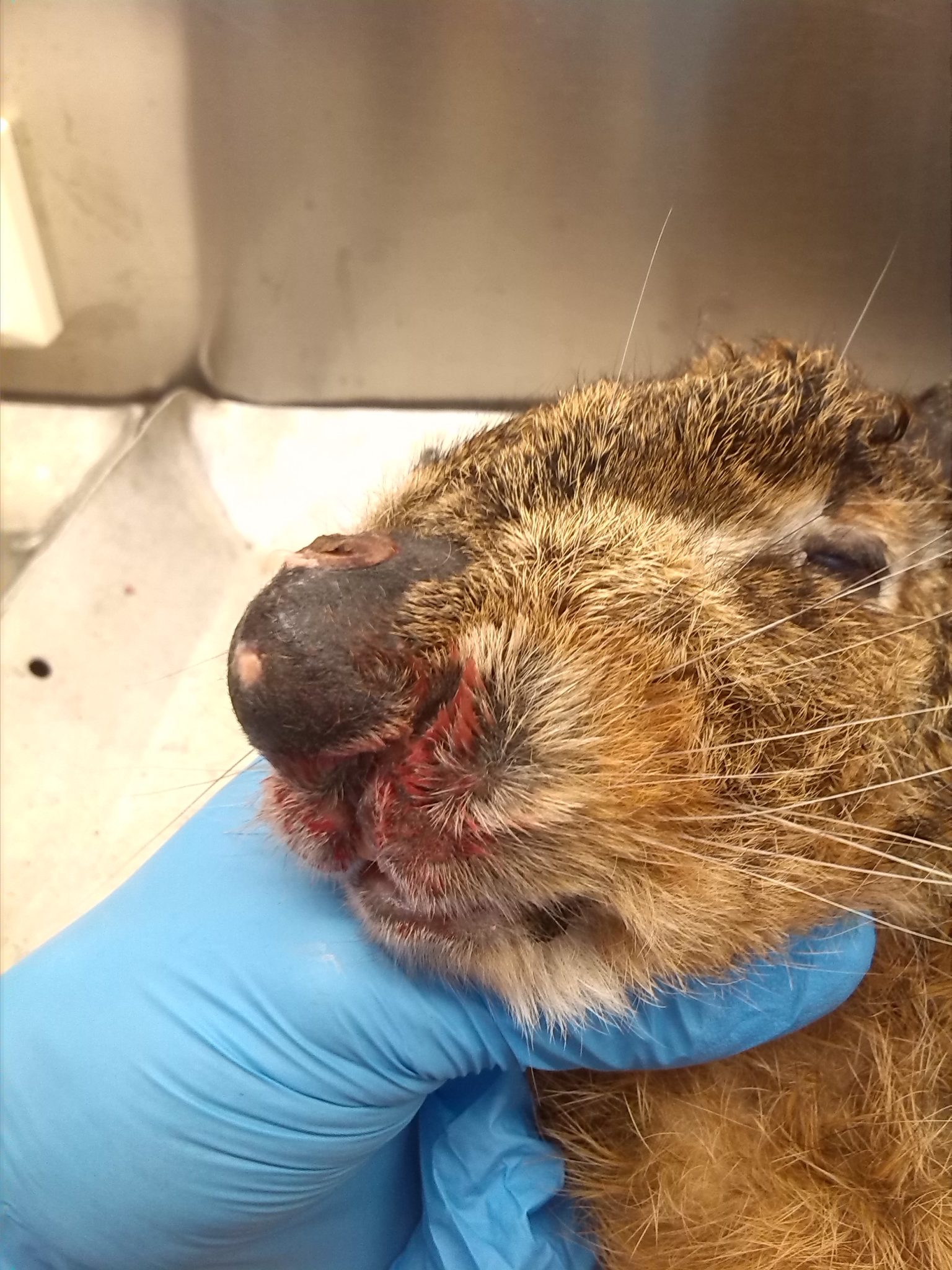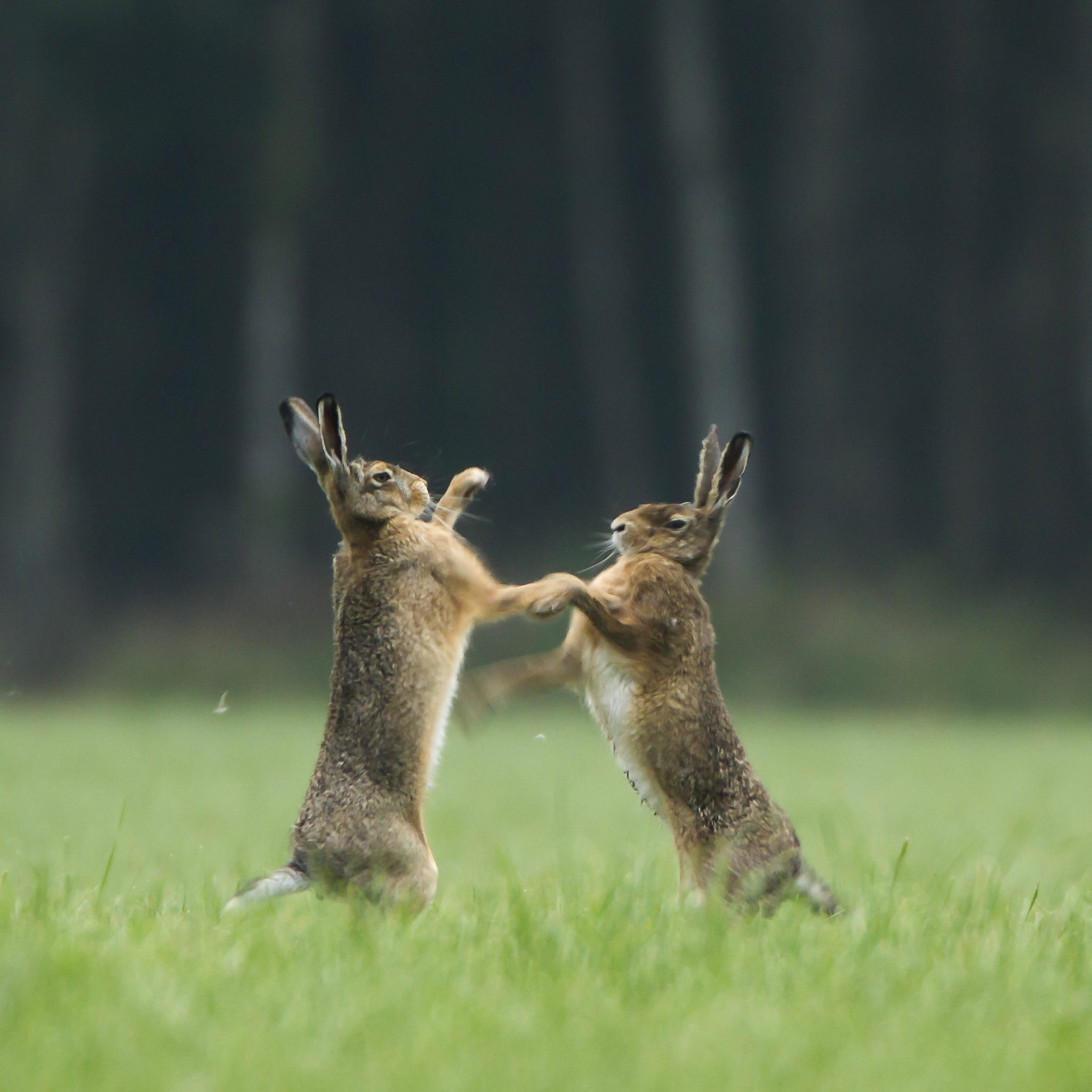Hare with growth on nose

Foto: DWHC
Late December 2017 a skinny male adult hare with a growth on the bridge of the nose and bald spots on the hind legs was submitted to the DWHC. Diagnostics showed that the growth was caused by the bacterium Staphylococcus aureus. The bald spots on the hind legs were caused by inflammation of the skin. This inflammation was caused by a bacterium, most likely also Staphylococcus aureus.
Staphylococcus aureus is a bacterium that is fairly frequently present on the skin and mucosal surfaces of hares. In general the presence of this bacterium does not cause any disease, but sometimes Staphylococcus aureus can enter the skin, for example through small abrasions, and this introduction can lead to inflammation of the skin. This inflammation often becomes a chronic problem and can lead to development of growths. These growths are primarily located in and just below the skin. The affected hare loses weight and eventually dies.

Boxing hares. Foto: Dick Pasman
These symptoms caused by S. aureus infection are primarily seen during hare breeding season, and are more common in males than females. Hares are more prone to damage to the skin in the breeding period due to, among other things, ‘boxing’ (see image). The acquired skin lesions during these mating rituals allow easy access for the bacterium.
Source information about Staphylococcus and hares: Seck-Lanzendorf, S. von, 1997. Der Einfluss des Ökofaktors Erkrankungen auf die Populationsentwicklung des Feldhasen (Lepus europaeus) im Forschungsrevier Czempin in Polen. Inaugural – Dissertation zur Erlangung des Grades eines Doktors der Veterinärmedizin an der Freien Universität Berlin.



